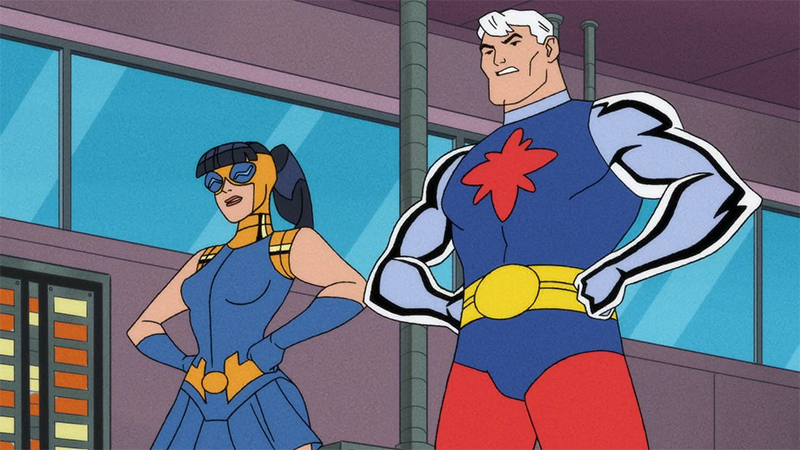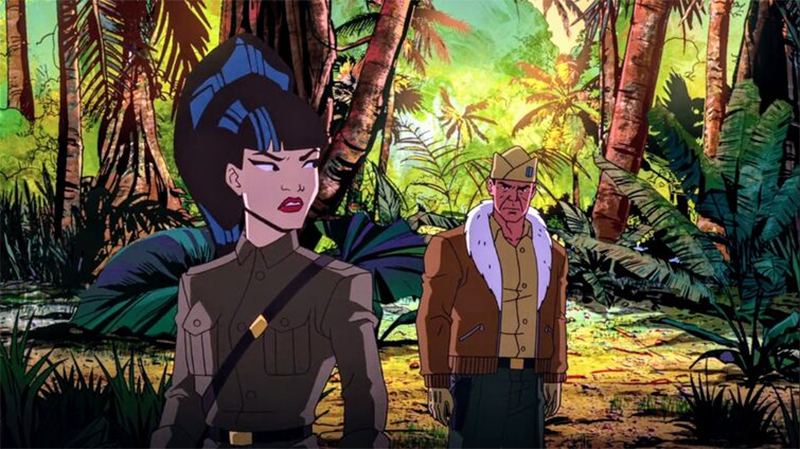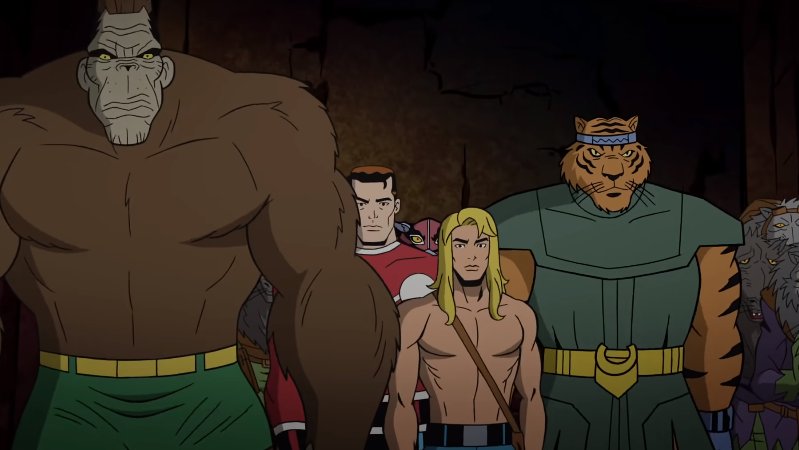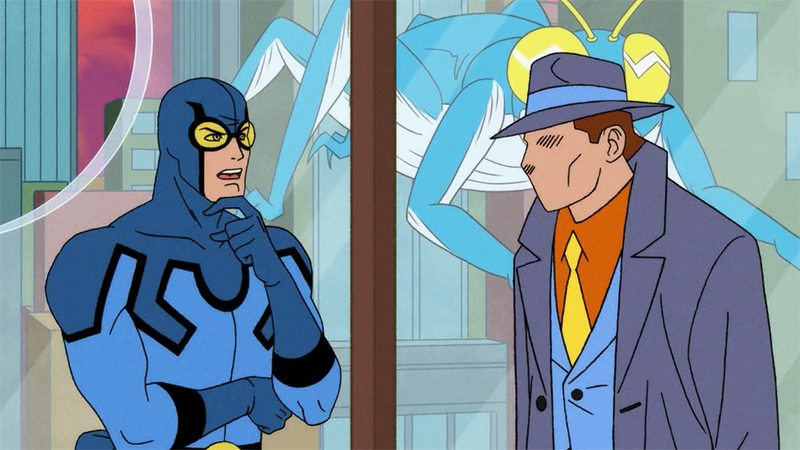ComingSoon’s Michael Leri spoke with DC Showcase: Constantine – The House of Mystery supervising producer Rick Morales about the new Blu-ray release that features four DC Showcase shorts.
Alongside the all-new Constantine short, DC Showcase – Constantine: The House of Mystery also features three other shorts in the form of Kamandi: The Last Boy on Earth!, The Losers, and Blue Beetle. All three have appeared in past DC Universe Movies collections as special features, so they aren’t exactly new to fans who may be big fans of the world of DC’s animated features.
Michael Leri: Each of the four shorts has a pretty different art style and many of which are like homages to past cartoons. What led to this very versatile selection of styles?
Rick Morales: I think it had to do with the the material itself and where it derived from. So with Kamandi, it was obvious to me that if we’re gonna do this, it’s gotta be [Jack] Kirby. There’s just no other reason to do it really in my mind. I like working in different styles. If you look at everything that I’ve done from the Lego stuff to Scooby-Doo to Mortal Kombat, you can’t really say that there’s one style that Rick Morales does. I just being all over the place. I like being a chameleon and trying new things and trying to make things work and maybe some things don’t work, but it’s just I like the challenge of that.
And so mostly it was the stories that informed the look of these things, but for something like Blue Beetle for example, that is such an homage and it’s so meant to feel like it’s an old pilot that’s been pulled off the shelf that was lost in the ’60 or something. It had look a particular way. There was just no way around it. And oddly enough, they all kind of became period pieces in a way. And so I think that informed the look of them as well and the style of animation. Just trying to like separate out from the stuff that James Tucker did.
RELATED: Interview: Matt Lanter on Voicing the Blue Beetle, Debunking IMDB Trivia

Blue Beetle’s short is an homage to classic comic book cartoons like ’60s Spider-Man and stuff like that. It has a sense of humor, too, and that humor sometimes takes aim at the format itself. What was the balancing of making sure it parodying some of the tropes of that era without making it a mean-spirited mocking of that animation era that many people have a lot of reverence for?
Morales: We don’t make it to mock it. We make it because we loved it because we grew up on it and that stuff is still a big part of my household. My two-year-old son knows the Spider-Man theme song. He’s heard it because we watch those cartoons. It’s all made from a place of love and sort of reverence for that material. But we were also recognizing the conditions that they were working under and why those things are the way that they are and why the mistakes pop up.
I remember when we were in a meeting and these came up it and when I brought up this idea of doing different styles, they thought it was great. They’re a fan of that stuff, too. But they were like, “We’re gonna have to cut your schedule and give you like two weeks to make thing.” They were being tongue-in-cheek, but that was the reality. [Back then,] they were doing all that they could to hit the deadlines and they were working through it really fast. So we approached it like that.
But the animation studios are so savvy now and the board artists that we work with, they’re so used to doing things in a certain way, so when you tell them like, “No, that looks too good,” or “The acting there is too good. You have to limit it.” It throws them a little bit. So I felt for our director because this is one of the first things that he’s ever directed. And I am telling him to fight his instincts as far as how to make one. When he back and looked at the material and he understood it and he came up with some great gags.
So are there hidden “mistakes?”
Morales: Yeah. If you look at Blue Beetle, you will notice obvious reused parts, bad cuts between scenes, and miscoloring on the character. These are all just little homages to stuff that you would see in Spider-Man where you could obviously see that the only thing moving on that character is their arm, because the arm is a slightly different color than the rest of their body. We recolored a Blue Beetle model just for one or two shots in the show so we could swap it out so it was intentionally miscolored. Stuff like that was a lot of fun to plan out.
RELATED: DC Showcase Interview: Director Milo Neuman Discusses Blue Beetle & The Losers

It sounds like Cuphead in that regard where Studio MDHR made purposeful mistakes to pay homage to old cartoons. The Losers is far from DC’s most well-known properties. What is it about that group along with setting it on Dinosaur Island that made you want to give them their own short?
Morales: I think they’re all pretty intriguing characters. I’ve always been a fan of Sarge, but I think it was Jim that had the initial idea to do The Losers. The Losers weren’t always about Dinosaur Island. They had a long-running comic book that dealt with them in the war and all that stuff. And they certainly had more adventures there, but to me, “The New Frontier,” the Darwyn Cooke book what was maybe my real first exposure to The Losers. So I immediately identify Dinosaur Island as really connected to The Losers and for me, it’s from what Darwyn did with that stuff.
Although we didn’t make it a tribute to his art directly because we did The New Frontier and that did look like his style. I just didn’t want to go there with this one, but that was that’s what got me fired up about was that connection, like what was done with them with Dinosaur Island and all that. So that made me excited. And it’s soldiers fighting dinosaurs. [laughs] I’m always down for that.

Kamandi is a little bit different and has a different style and it gets to play around with the mythology of Superman and the DC Universe. What did you find interesting about the post-apocalyptic setting and being set in a place after superheroes?
Morales: I always felt like Kamandi was tailor-made for animation. That book is all about worldbuilding. It’s Kirby just unleashing his creativity and then it’s sort of got the Planet of the Apes parallels, which I’m a big fan of those films or at least the first few. [laughs]
It gives you a chance to play around with some of that stuff. There is so much cool stuff within that world of Kamandi. And we tried to pack in as much as we possibly could while still making it coherent, which is difficult for a short. To me, what makes those sort of situations fun is the speculation of asking what happened here? What was this disaster that turned this place into this? Why is he the last real boy on Earth? What happened all the superheroes?
I think the appeal to some degree of this stuff is what it triggers in your mind as a reader or as a viewer. I always feel like some of the best fight sequences that I’ve ever seen in comics are fights that you don’t really see. It leaves me more to the imagination. And whatever you come up with in your head is always going to be better and more fulfilling at least for you than what could ever actually be shown to you. To me, that’s the thing that’s interesting about this type of post-apocalyptic tale is the idea of swimming around in your own head about how this possibly happened.










